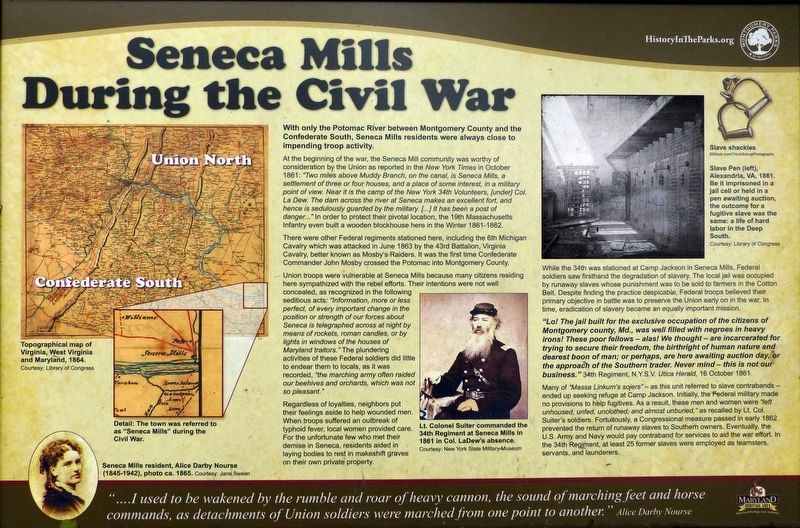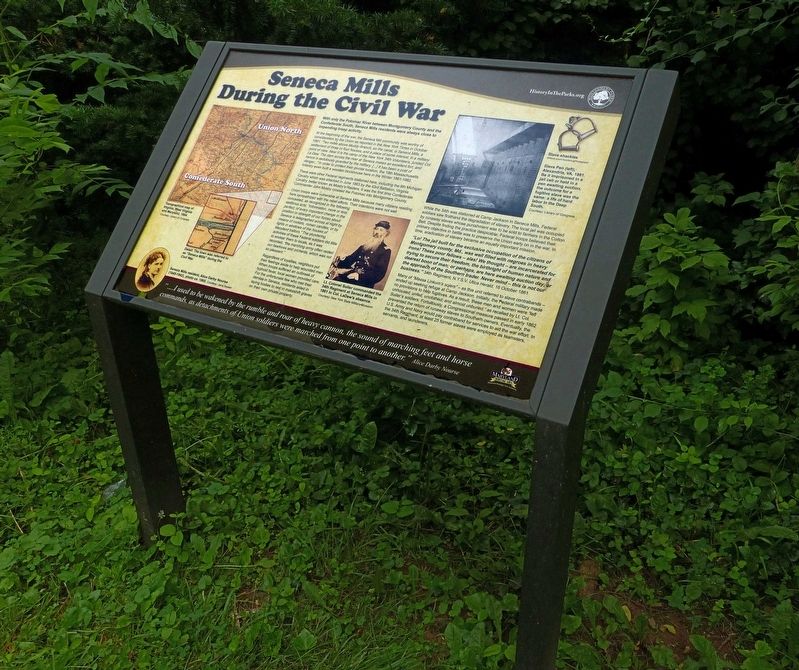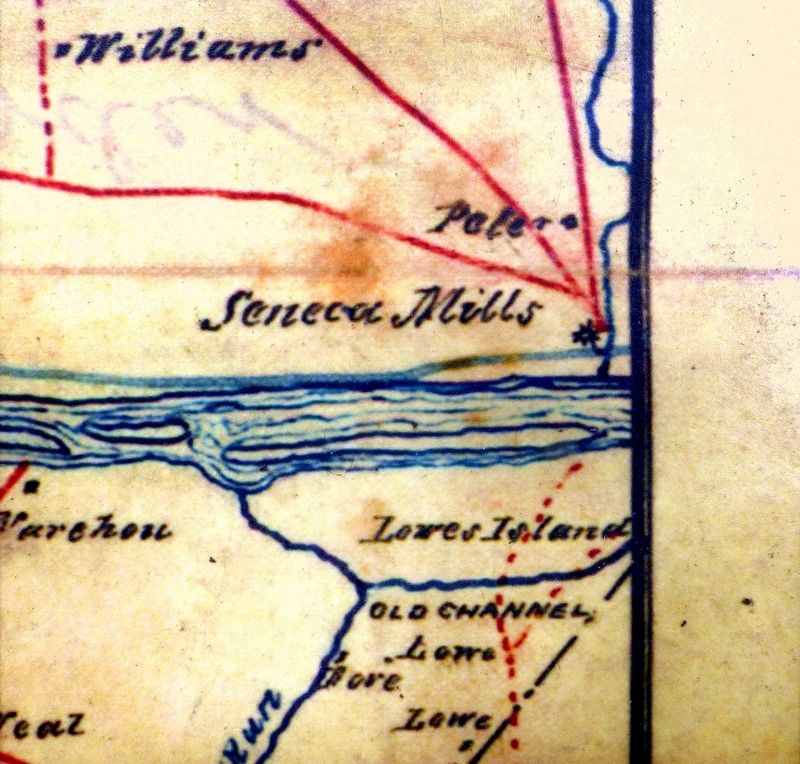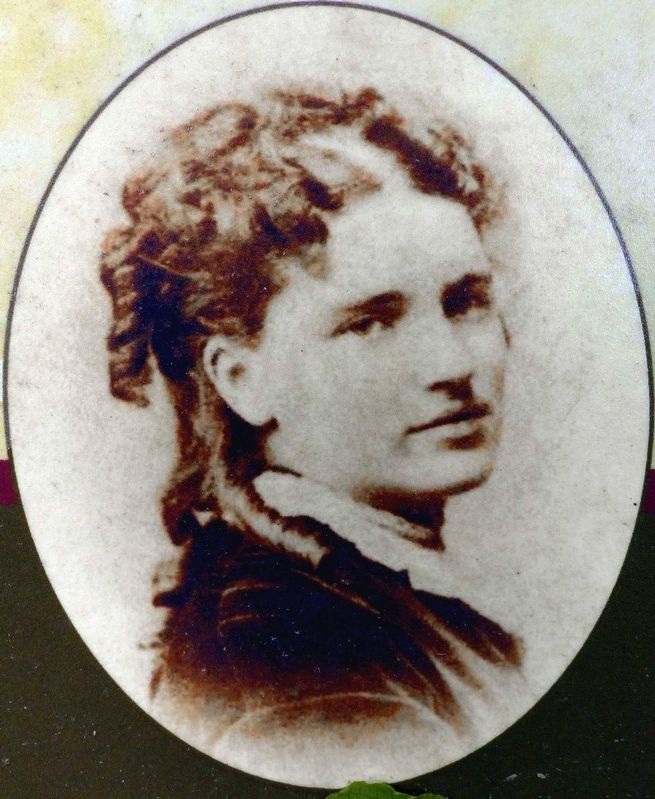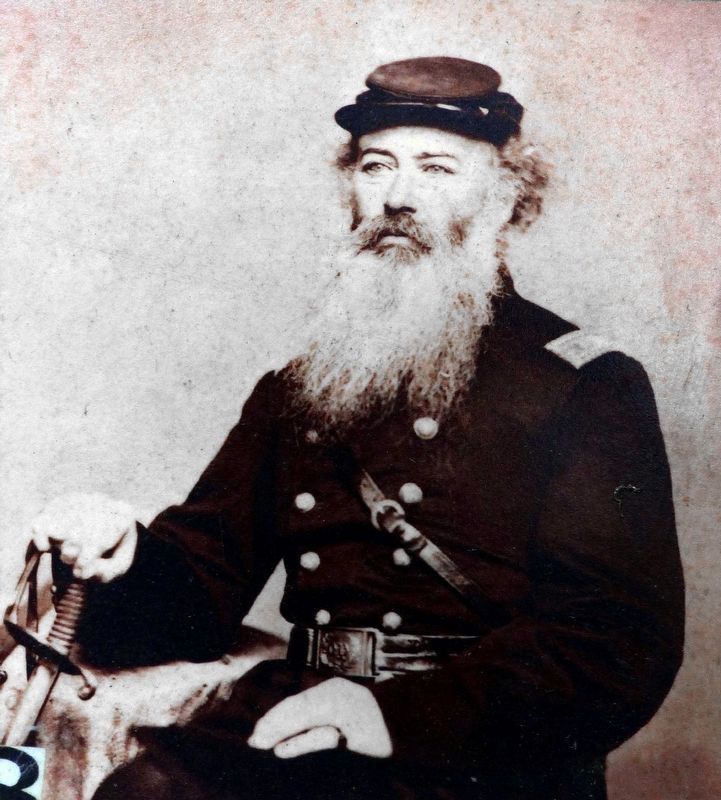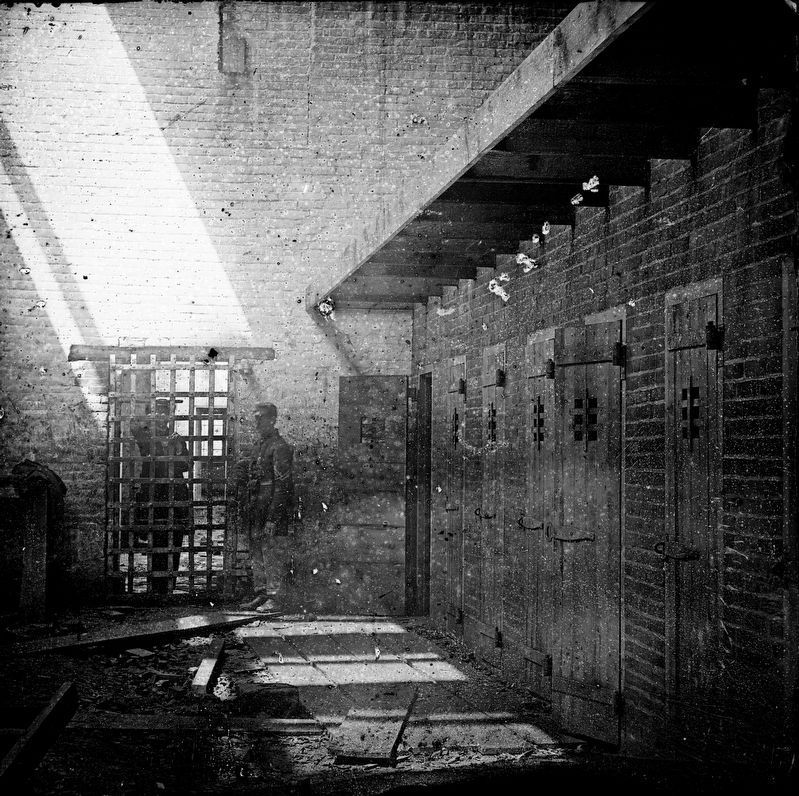Seneca in Montgomery County, Maryland — The American Northeast (Mid-Atlantic)
Seneca Mills During the Civil War
At the beginning of the war, the Seneca Mill community was worthy of consideration by the Union as reported in the New York Times in October 1861: “Two miles above Muddy Branch, on the canal, is Seneca Mills, a settlement of three or four houses, and a place of some interest, in a military point of view. Near it is the camp of the New York 34th Volunteers, [under] Col. La Dew. The dam across the river at Seneca makes an excellent fort, and hence is sedulously guarded by the military. [...] It has been a post of danger... “ In order to protect their pivotal location, the 19th Massachusetts Infantry even built a wooden ·blockhouse here in the Winter 1861-1862.
There were other Federal regiments stationed here, including the 6th Michigan Cavalry which was attacked in June 1863 by the 43rd Battalion, Virginia Cavalry, better known as Mosby's-Raiders. It was the first time Confederate Commander John Mosby crossed the Potomac into Montgomery County.
Union troops were vulnerable at Seneca Mills because many citizens residing here sympathized with the rebel efforts. Their intentions were not well concealed, as recognized in the following seditious acts: “Information, more or less perfect, of every important change in the position or strength of our forces about Seneca is telegraphed across at night by means of rockets, roman candles, or by lights in windows of the houses of Maryland traitors.” The plundering activities of these Federal Soldiers did little to endear them to locals, as it was recorded, “the marching army often raided our beehives and orchards, which was not so pleasant.”
Regardless of loyalties, neighbors put their feelings aside to help wounded men. When troops suffered an outbreak of typhoid fever, local women provided care. For the unfortunate few who met their demise in Seneca, residents aided in laying bodies to rest in makeshift graves on their own private property.
While the 34th was stationed at Camp Jackson in Seneca Mills, Federal soldiers saw firsthand the degradation of slavery. The local jail was occupied by runaway slaves whose punishment was to be sold to farmers in the Cotton Belt. Despite finding the practice despicable, Federal troops believed their primary objective in battle was to preserve the Union early on in the war. In time, eradication of slavery became an equally important mission.
“Lo! The jail built for the exclusive occupation of the citizens of Montgomery county, Md., was well filled with negroes in heavy irons! These poor fellows - alas! We thought - are incarcerated for trying to secure their freedom, the birthright of human nature and dearest boon of man; or perhaps, are here awaiting auction day, or the approach of the Southern trader. Never mind. - this is not our business.” 34th Regiment, N.Y.S.V. Utica Herald, 16 October 1861.
Many of “Massa Linkum's sojers” - as this unit referred to slave contrabands ended up seeking refuge at Camp Jackson. Initially, the Federal military made no provisions to help fugitives. As a result, these men and women were “left unhoused, unfed, unclothed, and almost unburied,” as recalled by Lt. Col. Suiter's soldiers. Fortuitously, a Congressional measure passed in early 1862 prevented the return of runaway slaves to Southern owners. Eventually, the U.S. Army and Navy would pay contraband for services to aid the war effort. In the 34th Regiment, at least 25 former slaves were employed as teamsters, servants, and launderers.
“… I used to be wakened by the rumble and roar of heavy cannon, the sound of marching feet and horse commands, as detachments of Union soldiers were marched from one point to another.” — Alice Darby Nourse
Erected by Montgomery Parks.
Topics. This historical marker is listed
in this topic list: War, US Civil. A significant historical month for this entry is June 1863.
Location. 39° 4.768′ N, 77° 20.413′ W. Marker is in Seneca, Maryland, in Montgomery County. Marker can be reached from Old River Road north of River Road, on the right when traveling north. Marker is along Seneca Creek at Poole's Store. Touch for map. Marker is at or near this postal address: 16315 Old River Road, Poolesville MD 20837, United States of America. Touch for directions.
Other nearby markers. At least 8 other markers are within walking distance of this marker. A Veteran’s Life in Montgomery County (here, next to this marker); Seneca Store (within shouting distance of this marker); Seneca Mill (within shouting distance of this marker); a different marker also named Seneca Store (within shouting distance of this marker); Seneca Creek: “A Raging River” (approx. 0.6 miles away); Seneca: “Average Man’s Resort” (approx. 0.6 miles away); The Historic Seneca Schoolhouse (approx. 0.6 miles away); Seneca Schoolhouse (approx. 0.6 miles away). Touch for a list and map of all markers in Seneca.
Credits. This page was last revised on June 12, 2018. It was originally submitted on June 12, 2018, by Allen C. Browne of Silver Spring, Maryland. This page has been viewed 624 times since then and 52 times this year. Photos: 1, 2, 3, 4, 5, 6. submitted on June 12, 2018, by Allen C. Browne of Silver Spring, Maryland. • Bernard Fisher was the editor who published this page.
